Use of technology in legal disputes is taking off, promising dramatic improvements in access to justice. But does legal tech just mean faster, cheaper disputes or will it start to change outcomes?
AT THE TABLE:
Masood Ahmed University of Leicester Andrew Ritchie QC 9 Gough Square Joanna Goodman technology author Ben Pilbrow Shepherd & Wedderburn James Bowling KL Discovery Rowan Turrall Boyes Turner Tony Guise eARB Akber Datoo D2 Legal Technology Andrew Hildebrand In Place of Strife Tim Wallis Trust Mediation Eduardo Reyes Law Society Gazette
Technology is infiltrating dispute resolution at multiple points in the litigation process, from claims portals to online dispute resolution (ODR) platforms to court modernisation. Attendees at this Gazette roundtable discuss the IT and cultural challenges of bringing civil justice online.
Tony Guise, director of eARB and eCOURT platforms refers to chapter 43 of Lord Justice Jackson’s Review of Civil Litigation Costs: Final Report, which defines effective information technology (IT) as ‘a central place to which and from which one can find all of the documents relating to a piece of civil litigation’.
But in recent years litigation technology has broadened significantly from the document management and case management capability outlined by Lord Justice Jackson, into a confusing collection of online systems and applications that deal with various aspects of dispute resolution.
Masood Ahmed, associate professor at the University of Leicester, defines litigation technology as the online processes for dispute resolution. ‘For example, the Civil Procedure Rule Committee is using an online platform for issuing and defending claims.’
But this is just one element of the litigation technology architecture. From Rowan Turrall’s perspective as a dispute resolution solicitor, there are two parts to litigation technology: the technology that law firms use (internally) for case management and e-discovery, and the (separate, external) technological interaction with the courts. Akber Datoo, of D2 Legal Technology and a member of the Law Society’s Technology and Law Committee, highlights the role of predictive technology in litigation: how court data is used to forecast case outcomes and guide decision-making, for example whether to settle or pursue a case.
Andrew Ritchie QC, at 9 Gough Square, offers more detail: ‘External technology also falls into two parts: the first part is IT to facilitate, and hopefully reduce costs, such as e-filing, video [communication], and e-discovery; the second part is e-decision making, something more cerebral than just the process. Internal legal IT involves case management and e-billing, but it is also about decision-making, for example whether to use the insurers’ Colossus software to evaluate pain and suffering in personal injury claims.’
James Bowling of KL Discovery highlights the challenges of working with digital evidence. ‘Although we use digital technology every day, understanding the evidence that it produces involves a lot of technical knowledge. Courts have to deal with a lot of evidence that can be difficult to interpret without expert systems.’ In other words, courts need digital tools and applications to work effectively with the volume and variety of digital evidence.
Tech-assisted mediation
Perhaps surprisingly, IT is having a powerful impact on mediation, notwithstanding that mediation training and principles focus on using face-to-face meetings to build the rapport that facilitates conflict resolution. Tim Wallis of Trust Mediation highlights the success of the Small Claims Mediation Service, a telephone mediation system, which has high satisfaction and settlement rates. ‘Meeting face to face simply doesn’t work when you have a dispute between someone in Exeter and someone in Newcastle,’ he explains.
Commercial mediator Andrew Hildebrand agrees: ‘Technology enhances mediation by overcoming distance between the parties, or when it is relatively simple to reach a financial solution. But it is also fantastic when a mediation doesn’t settle, because it’s the quickest way of taking control, for example by encapsulating everything in an email: what’s agreed, what’s not agreed, and the timetable going forward.’ These points illustrate that digital mediation and negotiation, which includes sharing and managing documents and agreeing schedules, is not simply creating an economic digital version of face-to-face mediation; rather, its qualities and advantages are changing mediation and litigation processes.
Self-service resources
And then there are the online self-service resources, pioneered by Joshua Browder’s DoNotPay chatbots that have helped thousands of users to challenge parking tickets, sue Equifax following its admitted data breach last year, and negotiate the cheapest airline prices without involving a lawyer, simply by building consumer rights law into the online forms and the algorithms that process the information.
More recently, HMCTS introduced a fully digital divorce application – helping separating couples complete the relevant forms, upload the necessary documents, pay for the application and submit it to court. In addition to helping to reduce conflict, this comparatively straightforward process has reduced the number of applications being returned because of errors by 90%. In this way, ODR is increasing access to legal resources – informing people of their legal rights and options in various circumstances and supporting them through online processes.
From ODR to online courts?
‘Access to justice is at the heart of what we’re doing with the Civil Procedure Committee to implement the online reforms proposed by Lord Justice Briggs,’ says Ahmed. ‘We are working to develop online court processes which are easy for litigants in person to access and understand, and lawyers can also opt into an online pilot. The modernisation process is looking to achieve a civil justice system that enables ordinary people to pursue small claims. We are also looking to embed ODR processes, including mediation, throughout the online justice system. We are looking to embed ODR mechanisms, including telephone and Skype mediation sessions to open up negotiation, mediation and other forms of ODR.’
He cites the example of Canada, where there are online tribunals and courts and you can take a claim from start to finish online.
Pilbrow notes that the internet transcends jurisdictions and therefore to some extent governmental authority, but adds: ‘In people’s minds, an online platform, no matter how many crests you put on the web page, would not have the same authority as walking into a courtroom, which is seen as an emblem of government.’ He adds that the most successful ODR platforms are commercial, such as eBay’s Resolution Centre.
DOWNLOAD JUSTICE
Lord Justice Briggs’ 2016 final report on the structure of the civil courts had proposals aimed squarely improving access to justice. In Briggs’ own words: ‘If [my 62 recommendations] are all substantially implemented, then the essentially high quality of the civil justice service provided by the courts… will be greatly extended to a silent community to whom it is currently largely inaccessible.’
The Civil Procedure Committee is currently working on its implementation. At the heart of the proposals are the digitisation of the courts and the creation of an ‘online court’. The aim is to cut the cost of litigation and be more accessible to litigants in person, but it does not aim, Briggs insists, to exclude lawyers.
Other key recommendations include allocating more high court judges to locations outside London, reducing hearing delays, and improving enforcement of judgments.
Successful case and document management systems are operating in UK courts. Ritchie points to CaseLines Crown Court Digital Case System as ‘an impressive example of how HMCTS can turn to electronic solutions to save taxpayers’ money’. Pilbrow attributes the success of CE-File at the Rolls Building to well-thought-out planning and project management that avoids scope creep.
‘They were sensible to set out with a very limited scope, as quite often IT implementations fail when they set out with too big a scope and it all comes falling down.’ Ritchie agrees, adding, ‘You have to start parsimoniously and then bolt on.’
This approach, however, may be what has led to the multiplicity of systems that dispute resolution lawyers have to deal with.
‘We have e-filing, but only in the Rolls Building,’ says Turrall. ‘So, if your case is being heard in one of the Royal Courts of Justice, you’re back to paper. If another case can be handled [through] online civil money claims, you’re online again. All these separate strands use great technology, but they don’t necessarily work together, so a lawyer with a fairly broad practice will need to remember five or six different ways of filing a claim.’
Nonetheless, e-filing is a huge benefit for practitioners. ‘Although initially it feels a bit scary to spend £10,000 online to issue a claim, online processes make our lives much easier,’ adds Turrall. ‘But consumers are mostly more comfortable with online processes than lawyers are.’
Does ODR need more government support – or less?
Ahmed believes that the government needs to make a commitment to continuous investment. ‘There’s a danger that because they’ve put up close to £1 billion in modernising the civil justice system and court processes, there’s an understanding that once it’s implemented, the system will run itself and they can go back to being hands off.’
Ritchie does not believe that the government should design or fund court modernisation, and that instead, it should be put out to tender to private industry, with well-defined objectives: e-filing, online storage and e-documentation for trials. ‘There should be tenders, and the system should be paid for by the litigants. I don’t think we should trust the taxpayers’ representatives to design an online system. They should set out clear criteria for the system and leave it to private industry to deliver it.’
Guise reminds attendees that the Rolls Building project was put out to competitive tender and Thomson Reuters was appointed. Ritchie wonders why the government are not using the Rolls Building project as a precedent and tendering out other court digitisation projects.
‘The litigants will be paying for most of it through issuing fees,’ he explains. ‘So, if it requires state funding to keep it going, the subsidy will be much lower than it is now.’
Wallis picks up on the gap between the pace of change between lawyers’ expectations and those of their clients. ‘If there is a shortage of money, or cultural resistance to the effect that our courts are sacrosanct, progress will be driven by commercial forces and by users’ expectations. People are used to booking holidays and theatre tickets online, so they will engage with a commercial solution for their legal problems.’
Who owns the IT – and the data?
This prompted a discussion over the ownership of the commercial IT solutions used by the courts, and, in the light of the General Data Protection Regulations (GDPR) coming into force, the data that they handle. Pilbrow wonders whether the government would consider allowing the tech provider to mine information passing through an ODR portal as a form of payment.
Hildebrand considers this a realistic possibility. ‘Ultimately, what clients want is not just justice but efficiency. Millennials have grown up to be more collaborative and will no doubt find a way of making money out of a system that replicates justice,’ he says, adding that some arbitrations take place entirely online. ‘There’s no reason why different entities should not offer dispute resolution services at competitive rates. That wouldn’t replace the legal system, but it might enhance it.’
AI and e-discovery
Ritchie turns to case management. ‘The courts need to restrict themselves to what they are good at – deciding the facts and the law on the issues brought before them. Why should judges manage cases and control the evidence that is brought before them? The courts need to step back from all this fiddling and meddling and focus on their core business.’
‘If you are encouraging a system where people will not need lawyers, you need to ensure that decisions are based on the right facts and laws,’ counters Pilbrow.
E-discovery was the first technology that prompted judicial intervention on case management, where parties have faced penalties for not using appropriate technology to manage documents and digital evidence. Commercially available AI tools can ‘read’ large volumes of evidence consistently and simultaneously. Instead of checking a sample of the evidence for relevant data, they scan everything.
Again, there is cultural resistance, but this is dissipating as parties to litigation recognise the potential cost-savings, particularly as lawyers tend to measure activity in time, rather than output/outcome.
‘AI use will increase because it is the only way of reviewing very large volumes of data in a timely and accurate way,’ observes Bowling. However, he refers to the current disclosure pilot scheme in the business and property courts, where parties can opt for ‘basic disclosure’ and must request ‘extended disclosure’ as a potential game changer.
Pilbrow believes that developments in law and technology will shift the focus away from data processing and hosting, and towards AI and predictive coding to calculate percentages of relevance.
‘Nowadays you don’t even need to train the system on a set of documents. Machine learning means you can just have it running in the background, pushing the most relevant documents to the front of the queue in a defensible way.’
Turrall too believes that the ‘basic disclosure’ pilot is a realistic way forward. Guise reiterates that in e-disclosure too, there are too many disparate apps offering stand-alone analysis and the lack of integration between systems produces inefficiencies.
Although advanced technology is transforming how law firms and courts are handling case and documentary evidence, and successful stand-alone systems have produced significant cost savings, it is clear that there is a long way to go.
Online court and alternative dispute resolution are proving effective and efficient, and potentially extending access to legal services, but the major challenge, in addition to culture change, which is being led by commercial and consumer interests, is the proliferation of different systems for multiple processes and the lack of progress towards standardisation or integration of technology in the civil justice system.
Information on the Law Society’s Technology and Law Committee can be found here.
Joanna Goodman is a technology author and freelance journalist.























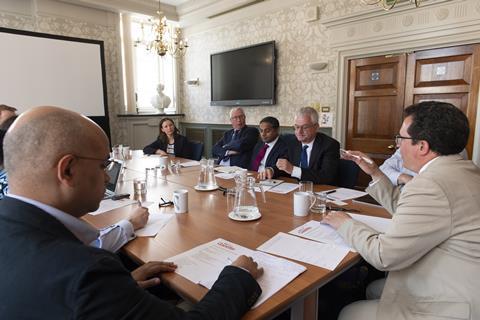
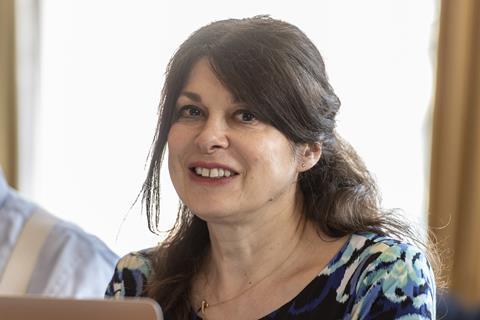






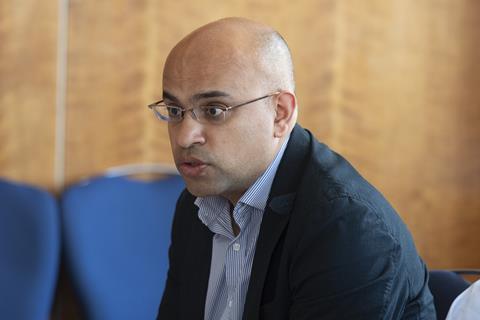





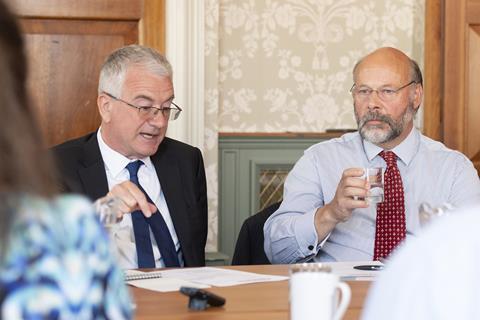

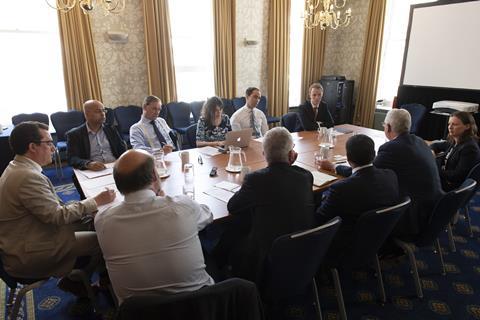





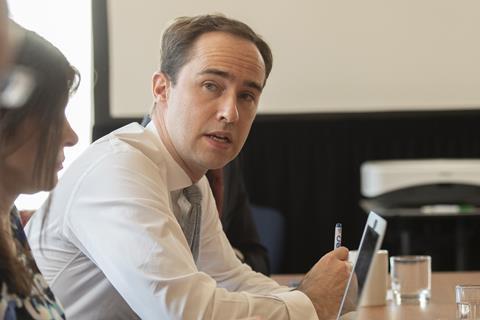














1 Reader's comment